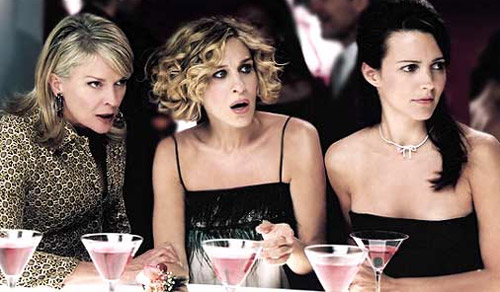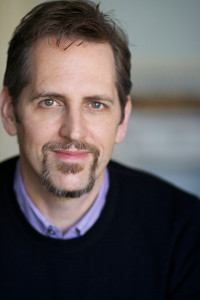When I first started writing, I wish someone had explained to me what the necessary elements of a scene were. (As well as the key criteria for a good story.) In many scripts I read (and some I’ve written!), the writer seems a little hazy about what a scene should contain, and as a result, the flow of the story isn’t as engaging as it could be.
So let’s clear up any confusion on what a scene is, what it should look like, and what is to be avoided.
A scene is a story in miniature
Just as a story has a beginning, middle and end, and is focused on a problem or conflict of some kind, so do most good scenes.
And just as “point of view” is crucial to a good story, so is it key to a good scene.
What that means is this: in any given scene, we are typically focused on one character’s subjective experience of the situation. We have a clear sense of what they’re feeling, what their problem is, what they want, and what’s in the way.
And the scene is about that situation developing, through conflict, as they attempt to solve their problem or reach their goal for the scene.
Those attempts typically don’t easily work, and result in complications or unexpected results that force them to improvise, with some kind of rising tension and emotion, leading to a climax of some sorts, and, finally a resolution to the scene, in which its key issue is ended in some way, but also, something has happened that turns the story in a new direction, leading to new scenes.
Whatever the main character’s overall problem/goal in the story is, things have now changed, in some way. That’s what makes the scene necessary.
Scenes that don’t engage audiences tend to lack these elements. They aren’t focused on a particular character’s understandable emotions and wants, and/or there isn’t a conflict at the center of the scene that builds and resolves in this way.
This is what we want to avoid: scenes that are just about characters exchanging information or opinions with each other, without much conflict or emotion. Scenes where characters get along — or goals are achieved easily — are not dramatic (or comedic) scenes. They just kind of lay there.
The audience is engaged by the problems, and attempts to solve them. And they need to have some “skin in the game” or a “dog in the fight,” in a scene. They need to be seeing it though someone’s eyes, who they are relating to in some way as they deal with a problem or pursue a goal. Otherwise they are just watching from an objective distance, without caring that much about what happens.
This doesn’t mean there’s not some room for good things to happen, or for characters to talk to each other about things without major conflict, but ideally, such moments are brief, and feature other elements that keep things moving along engagingly. For instance, in those scenes in Sex and the City where the four friends would commiserate over cosmopolitans about their latest man troubles, the advice they would give each other would (a) be entertaining, (b) focus on strong emotion, (c) focus on a particular character with a particular relatable problem, and (d) usually advance their story in some way. And even then, there would often be some conflict as the woman in question wouldn’t like how her friends are reacting to her issue, or what they think she should do.
I’ve heard it said that a good scene should either advance story (which is what I’ve mostly been talking about) or reveal/develop character. Or both. I don’t disagree. But even scenes that don’t advance story and only develop character need to do so in ways that are entertaining, emotional, and typically conflict-based, where it feels like the character’s situation is developing because of what we’re learning about them and what’s going on for them, during these “in between” moments of the story.
So there are a few key elements of a scene that we want to typically include:
- Point-of-view/relatability
- Conflict/problems
- Emotion
- Entertainment value (appropriate to the genre)
- Forward motion
All of these serve to emotionally connect the audience to what’s going on, and make them want to keep watching/reading. That’s ultimately the name of the game. They’re not as connected when people they don’t really care about talk about things they don’t have a strong stake in, with little difficulty, and where things aren’t moving forward, and aren’t really that fun to watch!
One other common point of confusion about scenes. There are two ways of thinking about them. On one hand, every time you change time or location, and have a new scene heading in a script, you’ve got a new “scene.” So a scene can be as brief as a single line.
That’s not what we’re talking about here. We’re talking about a scene as a complete dramatic unit that moves the story forward.
For instance, when Save the Cat talks about a feature film script containing 40 scenes that one could outline on cards (or paragraphs, in a Word document, like I do with my coaching clients), Blake Snyder means something much bigger than a location or scene heading change. He’s talking about a scene with an average length of 2.75 pages (in a 110 page script). It might have several location changes within it, before it’s fulfilled the criteria above.
Now some “moments” in a script might not accomplish all of the above, but serve as necessary interstitial elements, between scenes that do. As such, these are usually quite short, as in under a page.
One of the things I find often when a writer outlines a project for my feedback, is that a lot of what they think are full “scenes” in terms of “one of the forty” are really short information exchanges that don’t have enough meat, conflict or development in them to really engage the audience and move things forward. So rather than counting as a full “scene,” they are just little moments that can maybe be tacked onto the beginning or ending of one.
Let me conclude with something that a key mentor told me, during the years when he was the producer and I was the writer on a big project: scenes should serve multiple purposes. A lot can be going on in a given scene. Ideally, character is being revealed/developed, information is being given to the audience (shown, rather than told), AND the story is also moving forward in a dynamic way.
Rather than one small thing at a time happening, a lot can be packed into one scene, so that it’s rich, compelling and full of life and creative content.
This will help ensure that readers care about what’s going on, invest deeply, and stay engaged throughout the story.



Thank you for the ‘lightbulb moment’.
I’m a total newbie to the world of writing for entertainment and struggling to get my head round all sorts of ‘stuff’. I now understand why my screenwriter asked me to put as much specific detail as possible into my book script. Much more than I would ordinarily.
It looks like I’ll be moving from short story to novel going forward 🙄
A scene should also raise a question in the audience’s mind: if they aren’t wondering, “Now, what?” why turn the page?
This is a good reason to raise new questions, especially if you answered some in the scene. Resist the urge to answer all the questions, immediately.
Your definition of “scene” as a “complete dramatic unit that moves the story forward” has made me look differently at the whole writing process, regardless of whether its screenwriting, the short story or the novel.
Glad you found it helpful – thanks so much John!
Very clear explanation of purpose-oriented scenes. I get your point: no room to waffle in a well-constructed dramatic scene. Thanks, Eric.
Very interesting. Erik, this is right on target.
Thanks so much Tahiera!
Totally what Barry said 🙂 and one question:
When you say “it might have several location changes within it, before it’s fulfilled the criteria above”, what exactly do you mean?
I mean in a persecution scene I get the point, it can be many location changes before the scene can be fully developed, but I understand that here you are referring to also another kind of scenes, right?
Torill’s FARGO example here in the comments is great. A character can move about and have a series of events/experiences that each take a short amount of time, but they add up to a “complete dramatic unit” where we feel there’s been a beginning, middle and end, and the story is advanced in some way.
Very good. Example Fargo 1. Season after intro. Lester is nagged by wife (and washingmachine), goes to work, fails, goes out and is bullied by Sam and his kids, goes to hospital meet Malvo who offers to kill Sam for him. This is one scene of the 40 even if loc. change…?
Yes, I think that’s a good example!
Súper. I get it. Many thanks to both!
What Barry said.
What I said to Barry. 🙂
One of the best insights into scene writing that I have read. Thank you Erik!
B
I so appreciate that Barry!!